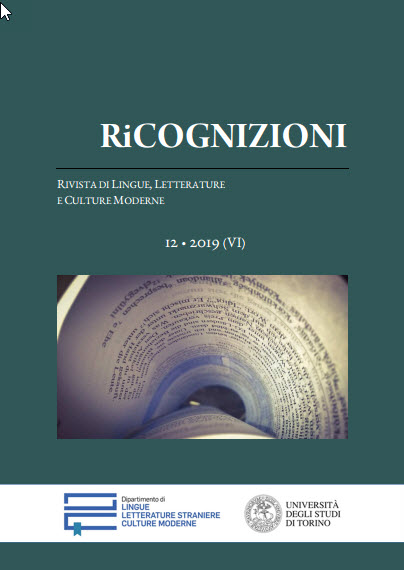L’APPROCCIO LINGUISTICO ALL’INTERTESTUALITÀ E LA SUA APPLICABILITÀ ALL’ANALISI INTERMEDIALE
DOI:
https://doi.org/10.13135/2384-8987/3639Keywords:
intertextuality, functions, intertextual paradigms, markers of intertextualityAbstract
In comparison to literary studies, in linguistics there has been relatively little focus on intertextuality since the beginning of postmodernism. While research into intertextuality from the perspective of literary studies often resulted in the search for motifs, linguists repeatedly reached their limits when searching for linguistic reference points for intertextuality. Thus, Coseriu defined "repeated speech" as not analyzable and excluded it from his further considerations. Through the repetition and reuse of texts and parts of texts in the same text or as part of new textual contexts, conditions are created which cannot be explained with simple linearity of the use of language. The phenomenon of the texts in the text refers to dependencies and breaks in coherence, the marking of which is just as problematic as their contribution to the requirements for understanding the text and thus to the constitution of the text's meaning. Some languages have developed specific means which must be mandatorily used when the content of what has been communicated comes from a foreign source and not from one's own reflection. Since the need to mark the origin of the speaker’s knowledge seems to exist in all languages, these studies have also been extended to European languages in recent years. New possibilities for investigating the forms and functions of intertextuality also arise from the ease with which linguistic constructions can be found in corpora. These possibilities have not yet been developed for the analysis of multimodal language productions. Some considerations in this regard shall be presentedDownloads
Published
How to Cite
Issue
Section
License
RiCognizioni is published under a Creative Commons Attribution 4.0 International License.
With the licence CC-BY, authors retain the copyright, allowing anyone to download, reuse, re-print, modify, distribute and/or copy their contribution. The work must be properly attributed to its author.
It is not necessary to ask further permissions both to author or journal board.








